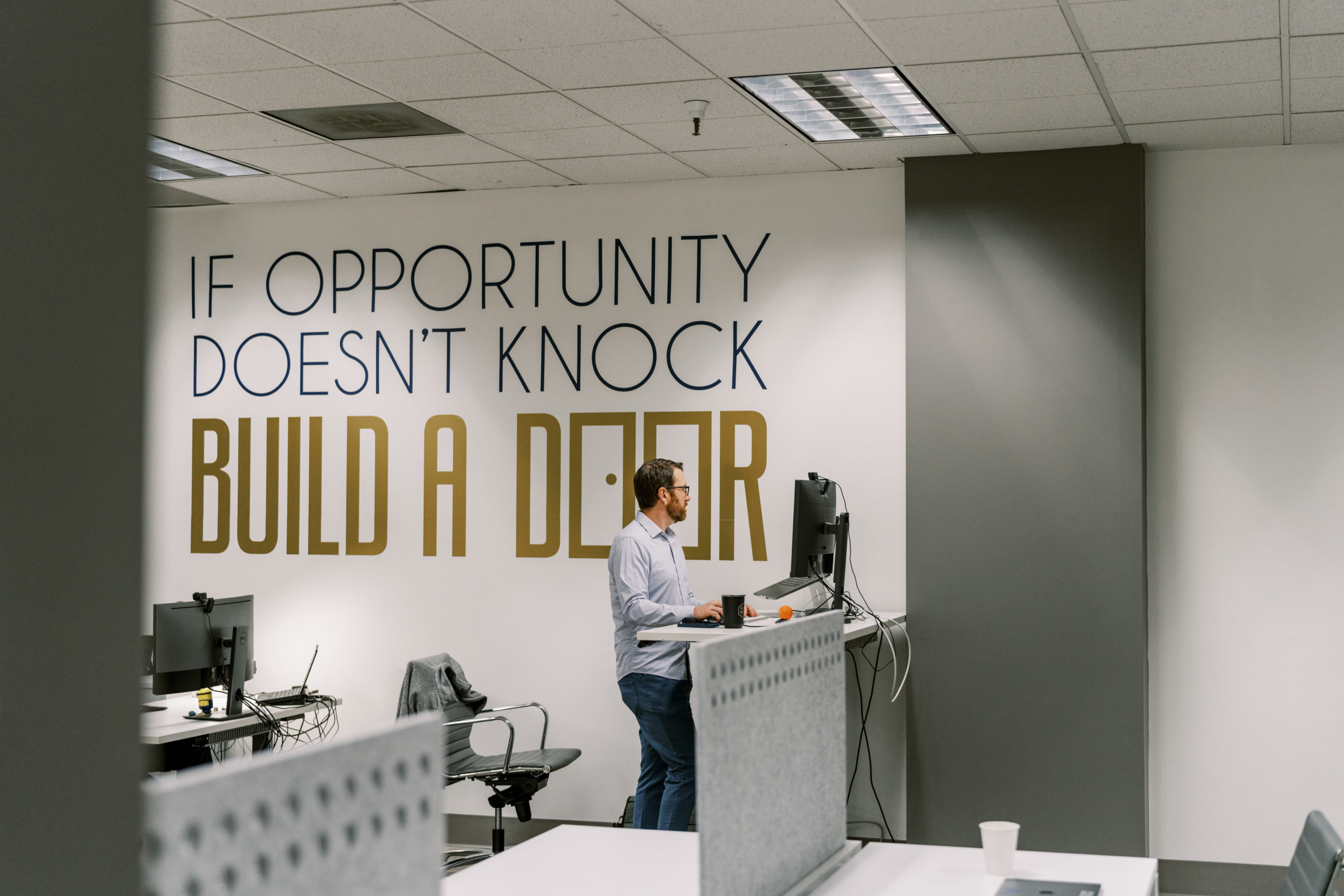
After a difficult year, communities are beginning to see a clear road back to their normal lives, following a global pandemic. However, returning to the traditional office space is not as clear for the majority of people. Employers are evaluating the true purpose of the office and how they can accommodate employees for overall success and satisfaction. Working from home is not sustainable for everyone long-term and employee wellness is taking a toll. In this blog, we will evaluate the hybrid work model and four monumental benefits.
What is the hybrid work model? Hybrid work is an approach that allows employees to choose from different work locations, whether that is from home, the office, or a coworking space. This in turn can benefit both the employer and employee. From improving productivity, encouraging work-life balance, cutting back on costs and strengthening community, hybrid work options are a clear solution to maintaining employee wellness and business success.
Improving productivity
Working from home has its perks, but not all the time. Work environments strongly affect how people perform and manage their workloads. When juggling between child care or looking over a list of house chores, people are far more likely to be pulled away from work or stopping work entirely to complete other tasks.
Giving a presentation in your bedroom versus in a conference room is much more difficult than it should be. Studies show that people remain stimulated and highly motivated when they can change their work environments. A hybrid work model offers a person the freedom and flexibility to leave the house when they need to and choose a workplace that is most productive for them.
Encouraging work-life balance
According to a report from Recruitment International, nearly one in five people left their previous role because of a poor work-life balance. When people are working from home all the time, it increasingly becomes more difficult to draw the line between work life and personal life. Work tasks will bleed into personal life, or vice versa, and neither area of life can thrive at full capacity. Providing a hybrid workspace encourages people to draw boundaries between work and home life, ultimately leading to more happiness and fulfillment.
Cutting back on costs
Not only do office buildings require a variety of overhead fees, but the average commuting cost in the U.S. is $2,600, according to the Citi ThankYou Premier Commuter Index. Cutting an employees’ commute by 50% to 75% gives people ample time to invest in their personal wellness such as morning workouts or arriving home in time to cook their favorite meal. It also helps to support an employee’s financial goals by saving money on commuting costs.
Financially investing in hybrid workspaces eliminates any additional overhead costs needed to support a new building or office space. A hybrid work option such as a coworking space has already done the work of installing mandatory amenities such as high-speed internet, printer/copier, kitchenette appliances, office furniture and supplies.
The power of community
Isolation and loneliness skyrocketed as the pandemic extended longer than anticipated. The need for community has proven to be a large contributing factor towards mental health. While certain tasks are better-completed solo, without community, people are feel supported or enjoy a sense of belonging. As humans, we also feed off of the energy from people around us. When people work in proximity to other professionals who are focused and even excited about their work, other people cannot help but be focused and excited as well.
Hybrid work in a coworking space allows employees to interact with people outside of their company and continue to build their network organically. Coworking spaces are filled with brightly engaged entrepreneurs, creators, makers, go-getters and businesses of all shapes and sizes that people are bound to interact with daily. The person sitting across the room from you could be your company’s new client or one conversation away from a new business idea.
In reality, the future of work is beginning to look very different. Working from home is a necessary precaution during a global pandemic, but is not a healthy solution for employees and the company’s long term. Giving employees a hybrid work model—flexibility to work from home as well as from a coworking space—is a sure way to maintain employee wellness and the overall success of a business.
